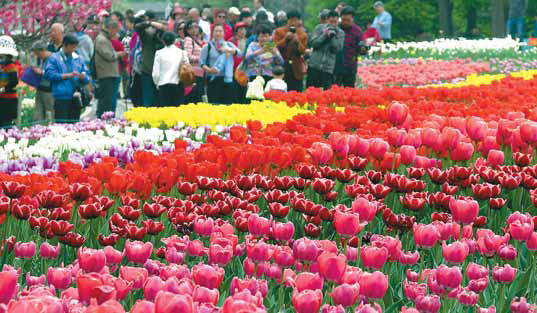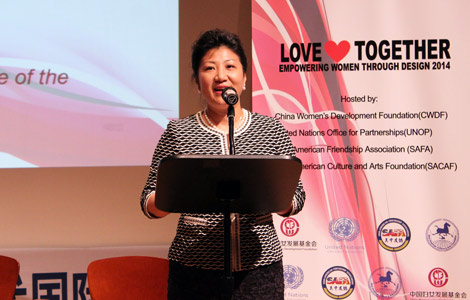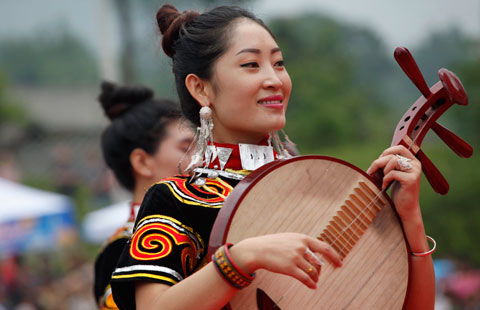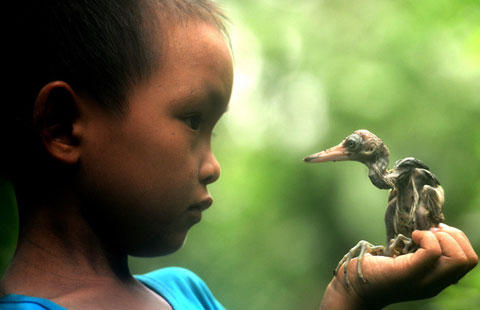Mother of all gardens
Updated: 2014-07-06 07:03
By Mike Peters (China Daily)
|
||||||||
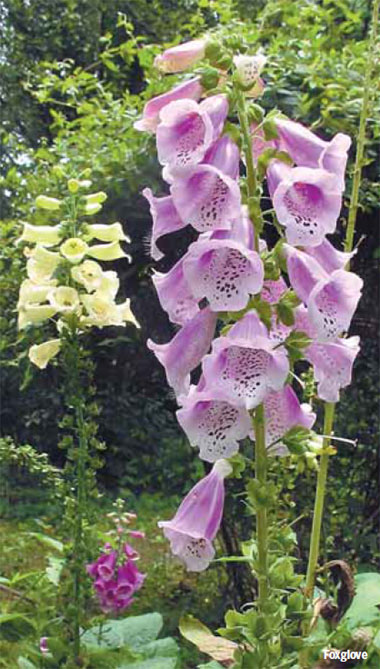
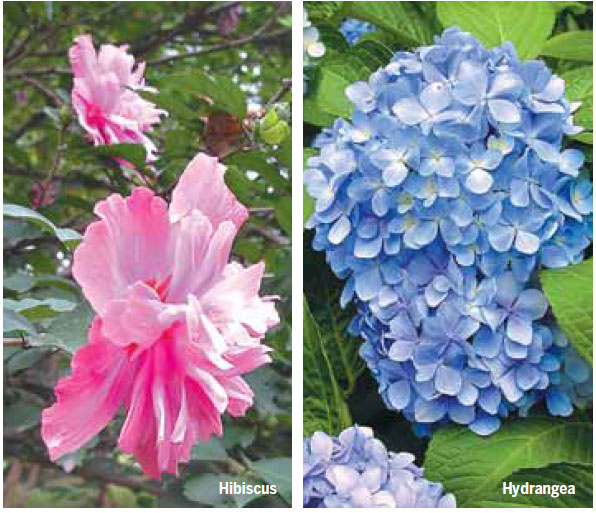
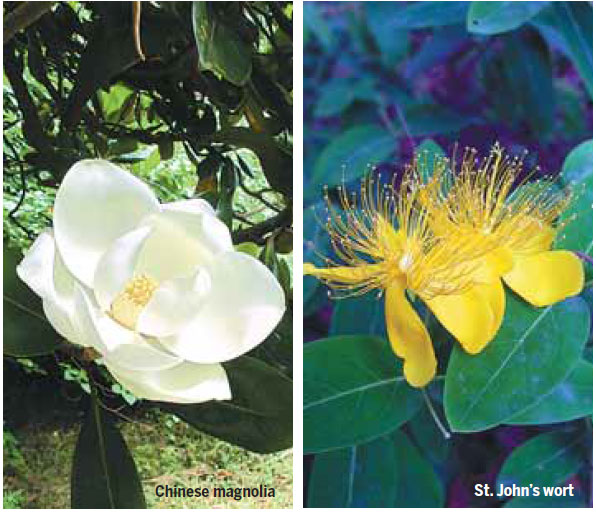
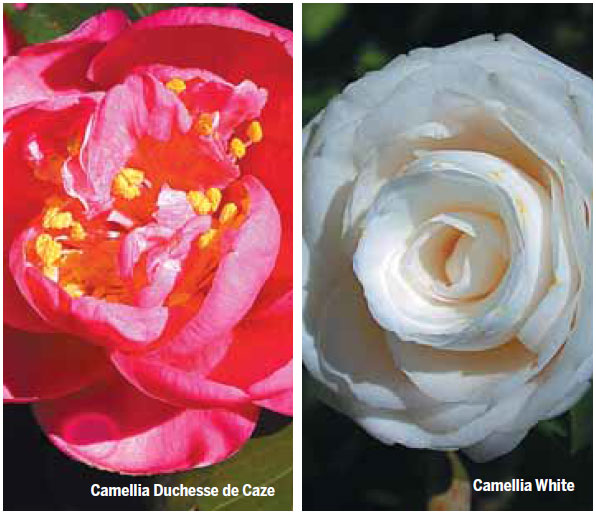
Plant collectors are back in China after a long hiatus thanks to the reform and opening-up policy to seek natural treasures for gardens, medicine cabinets and dinner tables. Mike Peters reports.
On my first visit to the Beijing Botanical Garden several years ago, the last thing I expected was a flashback to the American TV sitcom Gilligan's Island. But coming out just as I entered was Mrs Thurston Howell III to the life, in an immense lavender garden hat and matching parasol.
"I am so disappointed!" she told a similarly hatted lady in tow.
"They just have all the same plants we have at home!"
The Lovie Howell lookalike was right to an extent. But this is hardly a case of China copying the West.
Garden flowers such as magnolias proliferate in US and European gardens because Western scientists have spent the past several centuries eagerly collecting plants in the Eastern Hemisphere, especially in the Middle Kingdom.
"China has more plants than there are anywhere else in the temperate world," says Peter Raven, the longtime director of the Missouri Botanical Garden and lead author of the encyclopedic Flora of China.
"In fact, it has almost twice as many plants as the United States, which is about the same size, and about three times as many as there are in Europe."
Many form the backbone of modern ornamental gardens - like gingkos, rhododendrons, azaleas and forsythias, he says, while cultivated plants like soybeans are feeding millions.
Raven, a regular visitor to China, last year completed the 49-volume Flora of China with his collaborators, Wu Zhengyi and Hong Deyuan.
"The reason there are so many plants in China is that they've survived there better," he says in a National Geographic video.
"If you go back 15 million years in the past, you find much the same kinds of plants in China, Europe and North America, and they've survived in the warm temperate forests that stretch across the middle of China."
That plant wealth that has been a magnet for botanists for centuries and it continues to pull today. Research scientists from the US Department of Agriculture, for example, will come to China this fall - the third such team from the agency in as many years.
"The famous plant collector E.H. Wilson once referred to China as the 'mother of all gardens'," says Glin Varco, director of horticulture at Lan Su garden in Portland, Oregon.
China is home to more than 30,000 species - one-eighth of the world's total. Lan Su provides a microcosm of that treasure trove.
The garden's collection represents many years of dedicated passion and expertise, Glin says, "from monks who first nurtured 1,000-year-old camellias behind the sheltering walls of aged temples as well as the artisans, craftspeople and plantsmen who built the garden and procured the plants".
Today, Lan Su is a showcase for magnolias, cymbidiums, camellias, osmanthuses, rhododendrons, bamboos and many other specimens with Chinese roots. Many have a long history in traditional Chinese gardens, while others reflect more recent forays into China's hinterlands to collect species in the wild.
One of China's leading botanists remembers when such botanical exchanges simply didn't happen - from the stressful period from the country's civil war until after the "cultural revolution" (1966-76).
"By that time, China's scientists were very isolated," says He Shan'an, the retired director of the Nanjing Botanical Garden.
A rich period of plant hunting had carried Western naturalists around the globe from the 17th through 19th centuries - epitomized by romantic figures like Charles Darwin and Alexander von Humboldt.
After Deng Xiaoping began China's opening-up in the late 20th century, that old interest rekindled quickly.
The metasequoia is a great example of why scientists like Raven are so keen on China.
"Forty million years ago, it was the commonest forest tree in western North America. Now it's completely wiped out there," Raven says.
"But it has survived. There are about 6,000 individuals in China."
What Raven calls another "wonderful relic" in the country's heartland forests is the dove tree.
"The fluttering bracts that hang down from the tree in clusters look like doves flying," he says.
While photogenic flowers get the best press in the plant kingdom, botany has always been about much more than beauty.
David Creech, horticulture professor and arboretum director at Stephen F. Austin University in Texas, says he first came to China in 1997, when a Chinese colleague at SFA won a large grant to study camptotheca, a tree that produces a compound with potential cancer-fighting properties.
That trip led to later invitations to visit China on a variety of projects.
Creech has been fascinated by breeding and selection work that Chinese professor Yin Yunlong has done with the bald cypress, a tree China is now using in highway planting, parks and coastal windbreaks.
"Chinese researchers have bred promising parents, selected superior clones and propagated them asexually into numbers that we in the USA find difficult to comprehend," Creech says.
Raven, meanwhile, applauds China's efforts to preserve its biodiversity and plant heritage.
"But it's very difficult to meet the needs of 1.3 billion people, to allow them to consume more and to give them the things they want, like automobiles and other imports from the West, and still preserve the natural landscape or even the quality of the air or water," he says.
"They're fighting that battle - a battle with which we're all familiar - but they're going to have to do a great deal more in the future, as we all are."
Contact the writer at michaelpeters@chinadaily.com.cn
|
Colorful masses of tulips and other flowers draw big crowds in spring to the Beijing Botanical Garden, a public park that partners with the research-driven Institute of Botany nearby. Provided to China Daily |
(China Daily 07/06/2014 page1)

 Star Stefanie Sun holds concert in Beijing
Star Stefanie Sun holds concert in Beijing
 Faye Wong's manager refutes star's drug rumors
Faye Wong's manager refutes star's drug rumors
 Lu Yi and daughter Bei Er pose for street snaps
Lu Yi and daughter Bei Er pose for street snaps
 Photoshoots of actress Li Xiaomeng
Photoshoots of actress Li Xiaomeng
 Council of Fashion Designers of America Awards
Council of Fashion Designers of America Awards
 Fan Bingbing, first Chinese actress in Barbie Hall of Fame
Fan Bingbing, first Chinese actress in Barbie Hall of Fame
 Awarding ceremony of 2014 hito Pop Music held in Taipei
Awarding ceremony of 2014 hito Pop Music held in Taipei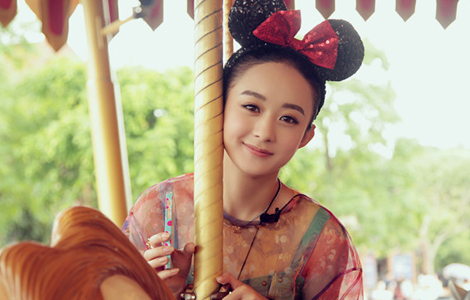
 Zhao Liying's photo shoot for Children's Day
Zhao Liying's photo shoot for Children's Day
Most Viewed
Editor's Picks

|

|

|

|

|

|
Today's Top News
Ex-security chief Zhou Yongkang under probe
Prudence urged over solar dispute
US visa delays likely to continue
McDonald's fishing for supplier
OSI group to fund food safety
China's FDI in US set for increase
Glitch delays visas for US-bound students
A musical spoof of the Clinton years
US Weekly

|

|
